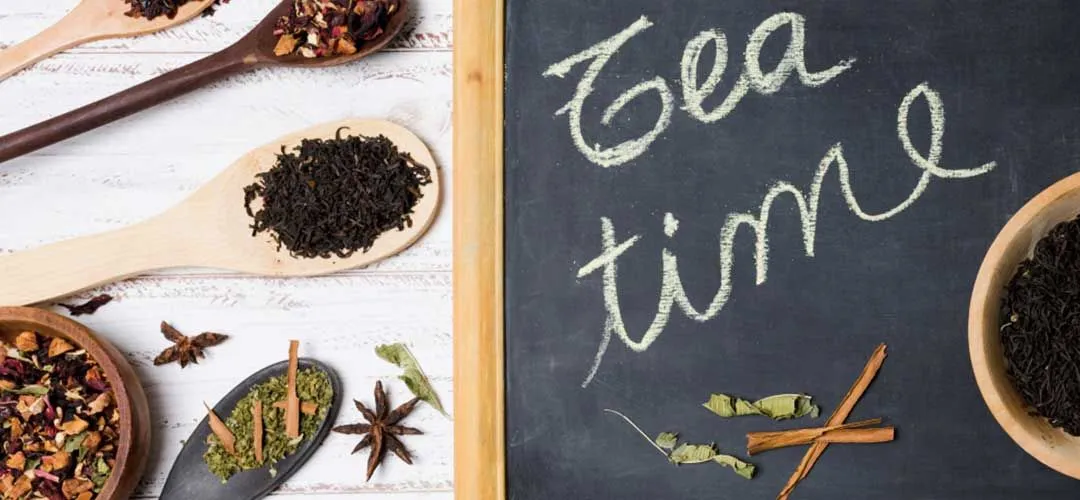Tea is liquid wisdom. It is the world’s oldest, most preferred, and most consumed beverage and has expanded its market share by 50,000 tons over the last ten years alone. With China at the helm, its market is expected to reach an all-time high of 297 billion liters by 2021. This stellar rise comes riding on a new trend of consuming green tea and herbal tea, and it is counting on those millions of passionate followers who simply can’t seem to go with anything else.
Most people around us are ardent philosophers of ‘PositiviTEA.’ They prefer to snuggle out of their warm bed in the morning only after their noses are full of the aroma of freshly made tea and any deviation from this signature style can ruin their day for good. You would possibly consider this a simplistic love affair where nothing can or should or would go wrong.
Then there are the advantages and disadvantages of drinking tea on an empty stomach. It can stimulate your digestive and nervous system but can also cause a ding down on your liver and kidneys. It can prevent brain cells from aging but can worsen irregular sleep patterns. It offers nearly the same “kick” as does coffee but an indulgence may prove unhealthy.
This subset of balancing features has given rise to a new trend of drinking green teas and herbal teas, and as against the regular milk tea, they promise a better landscape of health-centric benefits with time.
Green tea marks the rise of an awesome, all-natural experience of gulping down a cup of tea that contains near zero preservatives and chemicals. We believe that the healthy beverage may have first brewed in 960 AD in China.
Made of Camellia sinensis leaves, this natural variant offers a power-packed performance without taking a lot of deliberation to be prepared. It only needs a few cups of hot water and some good quality tea leaves, and optionally some sugar to get going. The only thing to note here is that the tea leaves are supposed to be added to the hot water only after it has been taken off the flame so the goodness of leaves may be absorbed easily.
The quality of tea is directly proportional to the quality of tea leaves used. This makes a strong case in favor of using only premium quality green tea leaves for their sheer cost-to-value propositions. We shall revisit this topic a little later in this article.
Also read: What Makes A Cup of Premium Green Tea So Very Special?
A cup of this naturally stimulating and tasty beverage can make a lot of difference in the way you perceive yourself. It can act in the background as your silent friend to deliver you all the goodness of Mother Nature in the purest form.
Here are some of the benefits of drinking green tea every day:
1. Faster weight loss, especially on the belly
2. Hydration of internal organs and detoxification
3. Lowered risk of cardiac diseases
4. Reduction in signs of aging
5. Makes skin glowing and fresh
6. Offers a ‘milder push’ to your adrenaline as compared to coffee
7. Hastens fat burning process
8. Reduces the risk of cancer
9. Stimulates neurons in the brain, and resists Alzheimer’s and Parkinson’s diseases
10. Reduces bad breath
11. Prevents Type 2 Diabetes
12. Strengthens cardiovascular system
There are innumerably more benefits that one can have from just two cups of this all-natural tea. We are next taking up the curious case of herbal teas that form a smaller but expanding market, and people are taking them as a smarter alternative to other traditional beverages too.
As one of the healthiest tea variants in the world, herbal tea is made of various medicinally and/or aromatic leaves or any other edible part of a non-tea plant. This new variant is fast ranking up in the charts because of its stunning combination of medicinal properties that translate into numerous mental, physical, and psychological benefits for the users.
The central part of this enduring reputation runs through a stunning combination of aroma and taste in particular, and it only goes from strength to strength with several lifestyle experts and celebrities leading its worldwide consumption. Some common herbal teas are made of chamomile, jasmine, rose, ginger, hibiscus, and turmeric leaves. Each of them offers a unique combination of taste and aroma along with a differentiated set of medicinal benefits.
It is difficult to single out any one of these beverages as the healthiest tea in the world. We would thus recommend you to look into the respective benefits. Some special types of herbal teas taste a great deal awesome and can also help you with boosting your immunity.
Doctors advise not drinking more than two to three cups of herbal tea every day. However, moderation is the key to a more fulfilled experience and you should not overreach your pleasure of sipping this tea.
Here are some reasons as to why you should try a cup of herbal tea today:
1. Helps reduce wrinkles
2. The aroma makes your day better
3. Aids digestion and stimulates the nervous system
4. Has natural anti-depressants
5. Helps in hydrating and detoxifying your body
6. Reduces inflammation
7. Helps burn fat faster
8. Strengthens immunity
9. Resists nausea and headache
10. Tastes better than normal milk tea
Oh, we would dread that question because it would be like choosing between Cinderella and Snow White. A simpler answer would be to choose between the blander but medicinal (green tea) and the more aromatic but less medicinal value (herbal tea) on offer. Choosing the one with unbroken tea leaves is crucial to better health as compared to the ones that are packed with fanning and dust of tea leaves.
Here is the disadvantage of using broken tea leaves:
1. Spurious quality
2. Uneven taste
3. Faster release of bitterness and astringents
4. May contain improper chemicals
5. Reduced medicinal value due to lesser catechins
6. Reduced concertation of aromatic essential oils
Opting for tea bags is not a new trend in offices. It is a fast, easy, and obvious solution to pump up one’s taste buds in a highly demanding environment in lesser time. However, this ease of usage and prompt preparation comes at a price.
You should go for premium green teas or herbal teas that specifically offer unbroken tea leaves.
Some tea brands may pack spurious quality of tea leaves in powdered form and may also contain fanning, thus reducing the antioxidants in it. You can safely expect this practice to reduce the medicinal value of the health drink by quite a fraction.
Secondly, going for a tea-bag-based approach also limits the absorption of the nutrients in the water. This may lead to some bitterness and astringency in the resulting beverage, thus causing acid reflux and a difference in taste profiles for most people.
Green tea has some amount of caffeine but herbal tea usually has none. Secondly, green tea is only made from Camellia sinensis but herbal tea can be made from any plant, and thus the latter may have a lesser quantity of antioxidants.
Tip: A cup of this natural tea contains a third of caffeine content in comparison to a cup of coffee. This value calculates to about 30 to 35 mg in an 8-oz or 237 ml serving of green tea.
The key is to know what you are expecting from your next cup of tea vis-à-vis your health and taste preferences. Choosing a branded and premium option would open you up to a myriad of healthy possibilities and we welcome you to make an informed choice today. Cheers!


